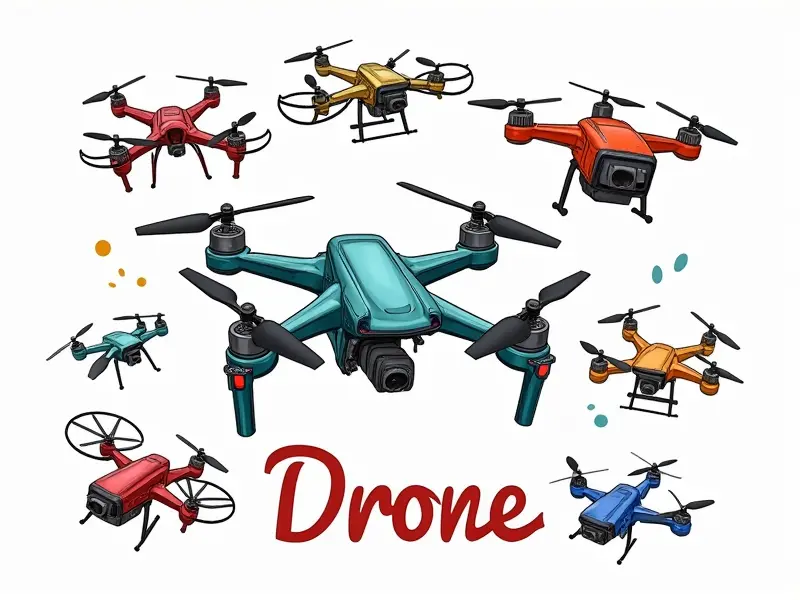How to program drone autopilot?

Essential Skills for Drone Autopilot Development
To effectively program a drone autopilot system, you need a robust set of skills. These include programming languages like C++, Python, and MATLAB, as well as knowledge in robotics, control theory, and aerodynamics. Understanding the nuances of flight dynamics is crucial to ensure your drone operates safely and efficiently.
Simplify Drone Autopilot with These Tricks
Developing an autopilot system for drones can be complex, but there are ways to simplify it. Start by breaking down the project into smaller components: navigation, communication, and control systems. Focus on each subsystem individually before integrating them.
Modular Design
- Develop individual modules for different functionalities such as GPS integration, sensor fusion, and motor control.
- This approach makes debugging easier and allows you to test components independently.
Optimize Your Drone Autopilot System Today
To optimize your drone's autopilot system, focus on performance tuning. This includes fine-tuning PID (Proportional-Integral-Derivative) controllers for better stability and responsiveness. Additionally, consider using lightweight libraries to reduce computational overhead.
Performance Tuning Tips
- PID Control: Adjust the P, I, D gains based on real-time flight data to achieve optimal performance.
- Lightweight Libraries: Use libraries like Arduino's Wire.h for efficient communication without sacrificing speed or reliability.
Build Custom Autopilot Functions for Drones
Crafting custom functions allows you to tailor the autopilot system to specific mission requirements. For instance, if your drone needs to perform precision landing, develop algorithms that account for wind resistance and terrain variations.
Precision Landing Algorithms
- Implement sensors like barometers or ultrasonic rangefinders to measure altitude accurately.
- Integrate real-time weather data into your algorithm to adjust descent rates dynamically.
Dive into Drone Autopilot Scripting Techniques
Scripting is a critical aspect of drone autopilot programming. Learn how to write scripts that handle complex flight maneuvers like autonomous takeoff and landing, waypoint navigation, and obstacle avoidance.
Autonomous Takeoff and Landing Scripts
- Takeoff: Write scripts that initiate pre-flight checks and then execute a smooth ascent based on predefined parameters.
- Landing: Develop algorithms to detect optimal landing zones, perform safe descents, and engage emergency protocols if necessary.
Step-by-Step Guide to Drone Autopilot Coding
Familiarize yourself with the step-by-step process of coding an autopilot system. Begin by setting up your development environment, then proceed to write core functionalities like navigation and control loops.
Development Environment Setup
- IDE: Choose a suitable Integrated Development Environment (IDE) such as Eclipse or Visual Studio Code tailored for embedded systems programming.
- Libraries: Incorporate libraries that support communication protocols like CAN, I2C, and SPI to facilitate seamless data exchange between components.
Core Functionalities Coding
- Navigational Algorithms: Implement algorithms for GPS navigation, waypoint following, and route optimization.
- Control Loops: Develop control loops that continuously monitor and adjust the drone's attitude to maintain stability during flight.
Beginner's Guide to Drone Autopilot Programming
If you're new to autopilot programming, start with basic concepts like sensor integration, motor control, and simple navigation scripts. Gradually progress to more advanced topics as your skills improve.
Basic Concepts for Beginners
- Sensor Integration: Learn how to integrate sensors such as accelerometers, gyroscopes, and magnetometers into your autopilot system.
- Motor Control: Understand the principles of motor control using PWM signals and ESCs (Electronic Speed Controllers).
Automate Drone Flight Paths with Autopilot
To automate flight paths, use waypoints to define specific locations on a map. The drone will navigate from one waypoint to another autonomously based on predefined instructions.
Waypoint Navigation Strategies
- Mission Planning: Plan missions by creating sequences of waypoints that the drone must visit in order.
- Dynamically Adjusted Routes: Implement algorithms to reroute the drone if it encounters unexpected obstacles or changes in environmental conditions.
Create Advanced Autopilot Scripts for Drones
For more sophisticated applications, consider creating advanced scripts that handle complex scenarios like multi-drone coordination and real-time data processing. Use machine learning techniques to enhance decision-making capabilities.
Multidrone Coordination
- Inter-Drone Communication: Develop communication protocols for drones to share information about their positions, status, and objectives.
- Synchronized Movements: Coordinate movements of multiple drones to perform tasks like search and rescue operations or aerial photography shoots.
Data Processing Techniques
- Multisensor Fusion: Combine data from multiple sensors to create a more accurate representation of the drone's environment.
- Real-Time Analytics: Use real-time analytics to monitor performance metrics and adjust flight parameters dynamically during missions.
Simplifying Drone Autopilot Program Creation
To simplify program creation, leverage existing frameworks like PX4 or ArduPilot. These platforms provide pre-built modules and extensive documentation that can significantly expedite development processes.
Using Frameworks Effectively
- PX4: Utilize PX4's modular architecture to quickly integrate new functionalities into your autopilot system.
- ArduPilot: Leverage ArduPilot’s extensive community support and comprehensive documentation for efficient development.
Learn Drone Autopilot Programming in Hours
Rapidly learn drone autopilot programming by following structured tutorials, engaging in hands-on projects, and participating in online forums. Focus on practical applications to reinforce theoretical knowledge.
Structured Learning Path
- Tutorials: Follow step-by-step tutorials that cover essential concepts like sensor integration and motor control.
- Projects: Engage in hands-on projects such as building a basic autopilot system or enhancing an existing one with new features.
Community Engagement
- Forums: Join online forums and discussion groups to ask questions, share insights, and collaborate with other enthusiasts.
- Social Media: Follow drone autopilot development communities on platforms like Reddit or Twitter for updates and inspiration.

